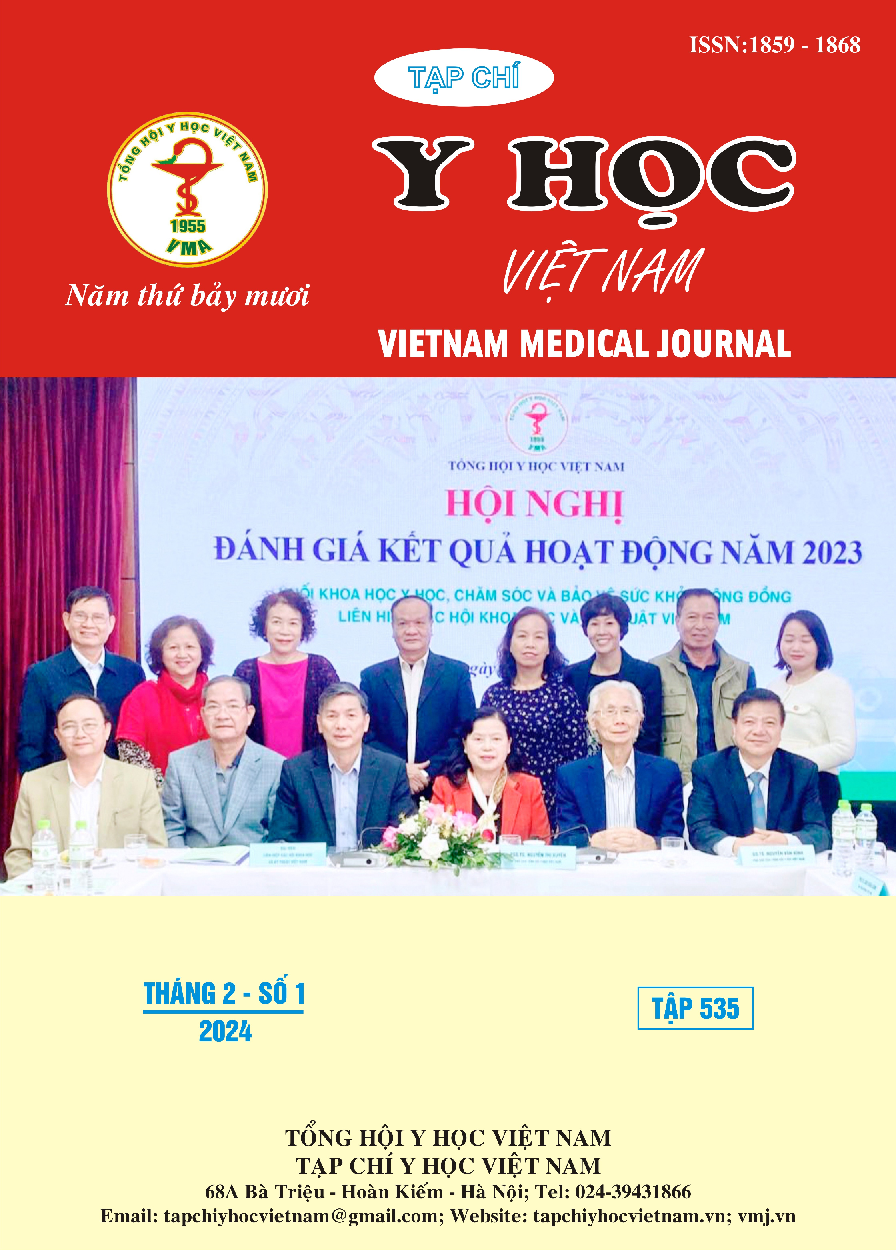CLINICAL MANIFESTATIONS, LABORATORY AND ETIOLOGY OF SEPTIC SHOCK IN NATIONAL HOSPITAL FOR TROPICAL DISEASES
Main Article Content
Abstract
Septic shock is a disease with a high mortality rate, identifying the cause is very important in early treatment with antibiotics. Objectives: Describe the clinical manifestations and determine the cause of sepsis leading to septic shock. Methods: Prospective, describe the clinical symptoms and determine the cause of the disease by blood culture. Results: The disease mainly affects men (71.4%). The mean age of the study group was 55±15.6 years old. 50% of patients have impaired consciousness. Most had abnormal white blood count (61.2%), and inflammatory index CRP increased > 40 mg/L (88.2%). The primary source of infection was abdominal (36.7%), respiratory (26.5%), and unknown source of infection (23.5%). The causative agents of the disease were E. coli (accounting for 33.4%), S. suis and K. pneumonia, B. pseudomallei accounted for 13.3%, and S. aureus and Salmonella 6.7%. Conclusion: Inflammatory indicators and metabolic acidosis are common clinical manifestations. Gram-negative bacteria are the main cause of disease
Article Details
References
2. Dellinger, R.P., M.M. Levy, A. Rhodes, et al., (2013). Surviving Sepsis Campaign: International Guidelines for Management of Severe Sepsis and Septic Shock, 2012. Intensive Care Medicine, 39(2), 165-228.
3. Giang, B.T.H., (2016). Nghiên cứu một số thông số huyết động và chức năng tâm thu thất trái ở người bệnh sốc nhiễm khuẩn. Luận văn Tiến sĩ Y học. Đại học Y Hà Nội; .
4. Trần Văn Quý, (2019). Nghiên cứu một số yếu tố tiên lượng tử vong ở người bệnh sốc nhiễm khuẩn điều trị tại bệnh viện bệnh nhiệt đới trung ương. Luận văn Thạc sĩ Y học. Đại học Y Hà Nội;.
5. Beck, V., D. Château, G. Bryson, et al., (2014). Timing of vasopressor initiation and mortality in septic shock: A cohort study. Critical care (London, England), 18, R97.
6. Singer, M., C.S. Deutschman, C.W. Seymour, et al., (2016). The Third International Consensus Definitions for Sepsis and Septic Shock (Sepsis-3). JAMA, 315(8), 801-810.
7. Trần Minh Điển, (2008). Nghiên cứu mối tương quan giữa nồng độ procacitonin huyết tương với mức độ nặng nhiễm khuẩn. Đại học Y Hà Nội;.
8. De Backer, D., J. Creteur, M.-J. Dubois, et al., (2006). The effects of dobutamine on microcirculatory alterations in patients with septic shock are independent of its systemic effects. Critical care medicine, 34(2), 403-408.


